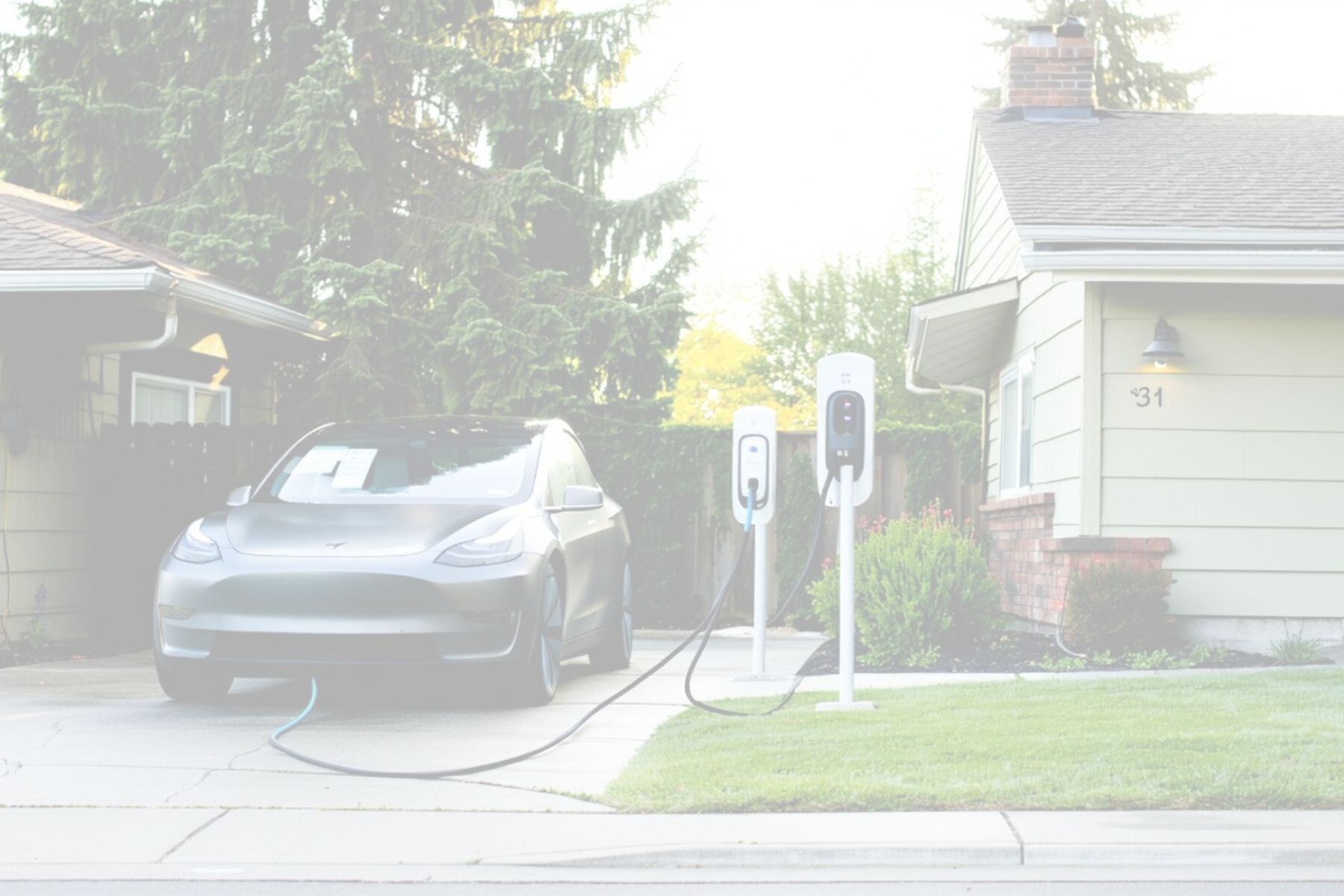Congratulations, you've probably found this blog because you have decided to install an EV charger at home—great move! Whether you're driving a Tesla, a Rivian, or any other electric vehicle, having a dedicated Level 2 charger like a Tesla Wall Connector makes charging faster, safer, and more convenient.
But before installation day, there’s an important step you shouldn’t skip: the home EV charger site visit. This in-person consultation with a licensed residential electrician lays the groundwork for a successful, code-compliant install tailored to your home.
The Electrical Panel Review
Every site visit begins at the core of your home’s electrical system: the main service panel. Your electrician will inspect it to determine whether your system can accommodate the demand for the EV charger. This includes:
- Checking available space for a dedicated breaker
- Confirming panel capacity (most homes have 100, 150, or 200 amps)
- Looking for any wear, outdated components, or safety issues
If your panel is already maxed out or outdated, the electrician may recommend a panel upgrade or load management system to ensure safe operation once the charger is installed.
Load Calculation and Capacity Check
Next, the electrician will perform a load calculation. This step helps determine whether your home’s existing electrical system can handle the additional load of the EV charger without overloading circuits or compromising safety.
They’ll take into account your major appliances (like HVAC, water heaters, ovens, etc.), compare that with the available amperage, and assess whether your home is good to go—or if adjustments are needed.
For Tesla Wall Connectors, which often require a 60-amp circuit, this calculation is especially important.
Finding the Right Location for the Charger
Once the electrical system is evaluated, attention turns to placement. The electrician will walk your property to find the most practical and efficient location for your EV charger. This involves:
- Measuring the distance from your panel to the installation location
- Assessing indoor vs. outdoor mounting options
- Considering weather exposure and the need for protective conduit
- Evaluating where and how you typically park
- Make sure the charging cable can reach your vehicle’s port easily
If you’re not sure where to place the charger, your electrician will guide you based on access, code requirements, and your home’s layout.
Discussing Equipment and Permitting
If you already have a charger (such as a Tesla Wall Connector), our professional electricians will confirm the specs and compatibility with your setup. If not, we may offer recommendations based on your vehicle and daily charging needs.
A few more things we will also go over:
- Permitting requirements in your city or county
- Who handles filing (most electricians manage this for you)
- Inspection process following installation
This guarantees your installation is both legal and safe, and ready for inspection if needed.
Getting a Quote and Timeline
After gathering all the necessary information, we will either provide a quote on the spot or send one shortly after. The quote typically includes:
- Labor and materials
- Charger installation and any electrical upgrades
- Permit and inspection fees
- Additional equipment, like disconnects or conduit for outdoor installs
You’ll also get a timeline estimate. Most standard installations are completed in a day or less, but permits and inspections may take additional time depending on your jurisdiction.
What You Can Do to Prepare
To make the most of the visit, here are a few simple ways to prepare:
- Ensure your electrical panel is accessible
- Clear space in the garage or driveway near where you’d like the charger
- Be ready to share where you typically park your EV
- Have the charger available if you’ve already purchased it
- Write down any questions or concerns you’d like to discuss
Why the Site Visit Matters
While it might be tempting to skip this step and go straight to installation, a site visit helps prevent costly surprises and ensures your charger is installed safely and efficiently. It gives you the chance to:
- Understand exactly what’s involved
- Ask questions about charging speeds, energy use, or rebate eligibility
- Get personalized recommendations for your home and EV
A well-planned installation starts here.


.jpg)
.jpg)
SHARE